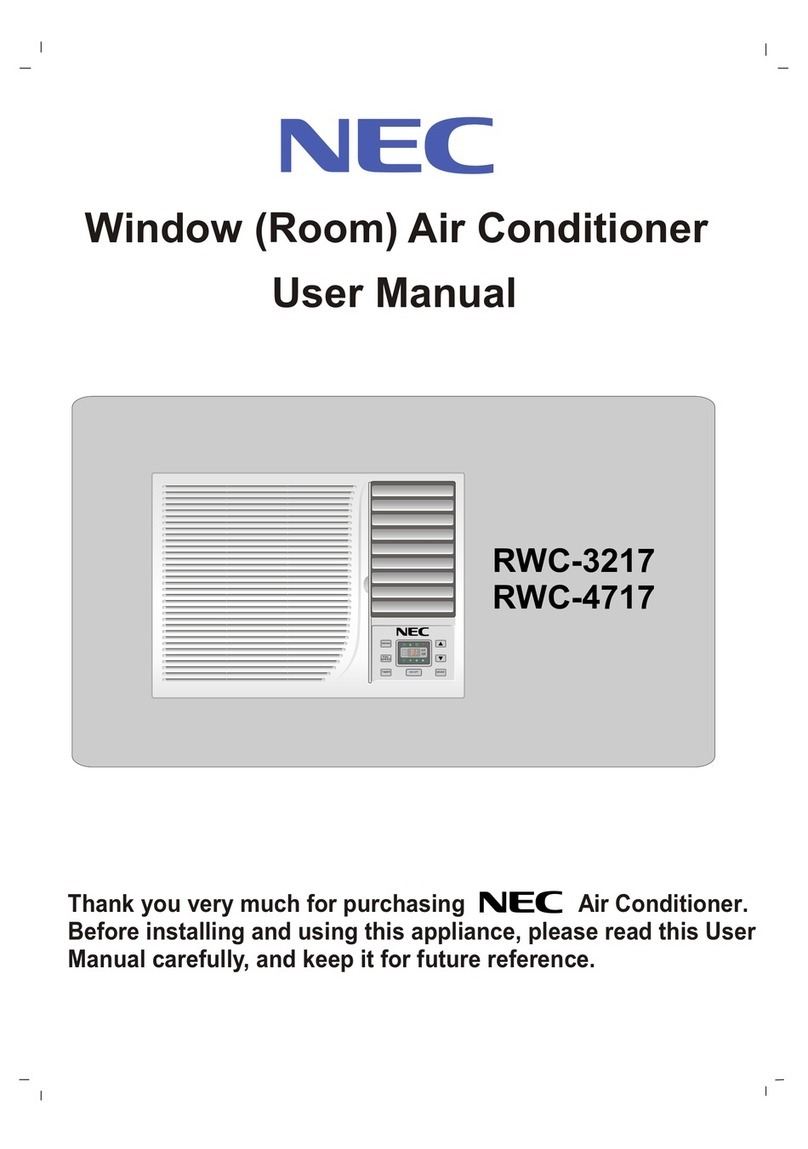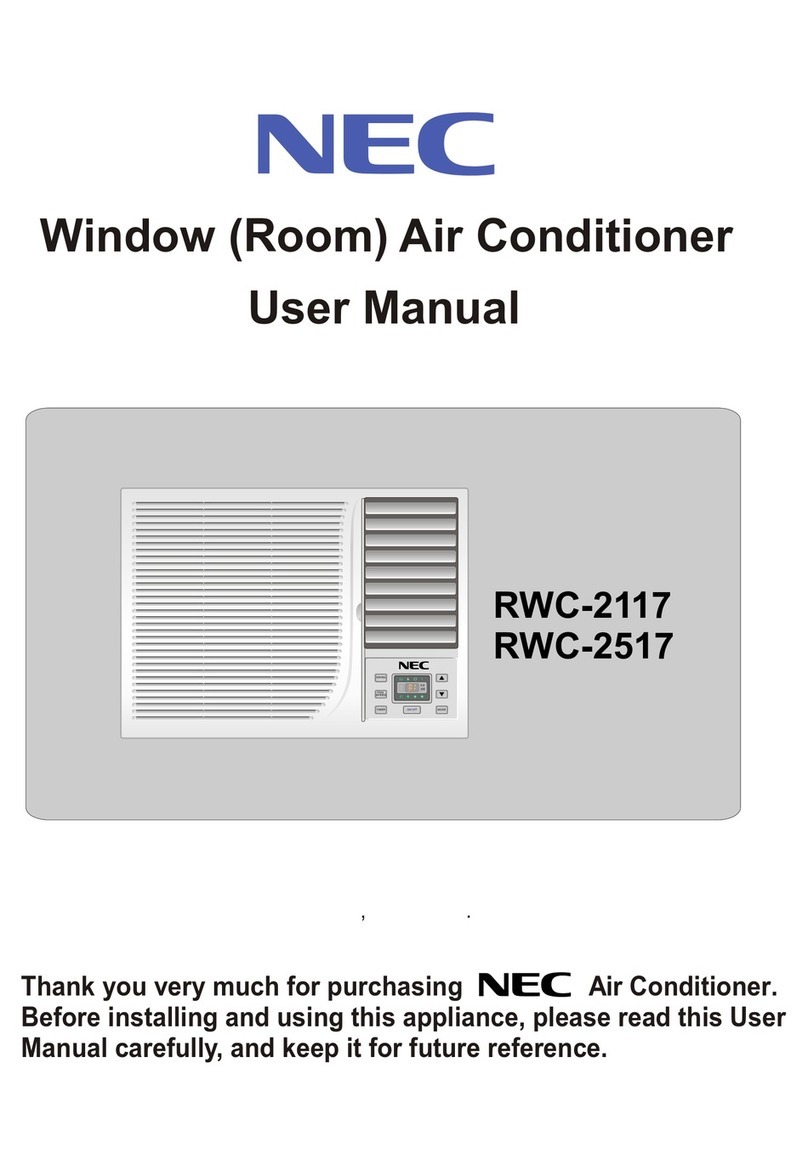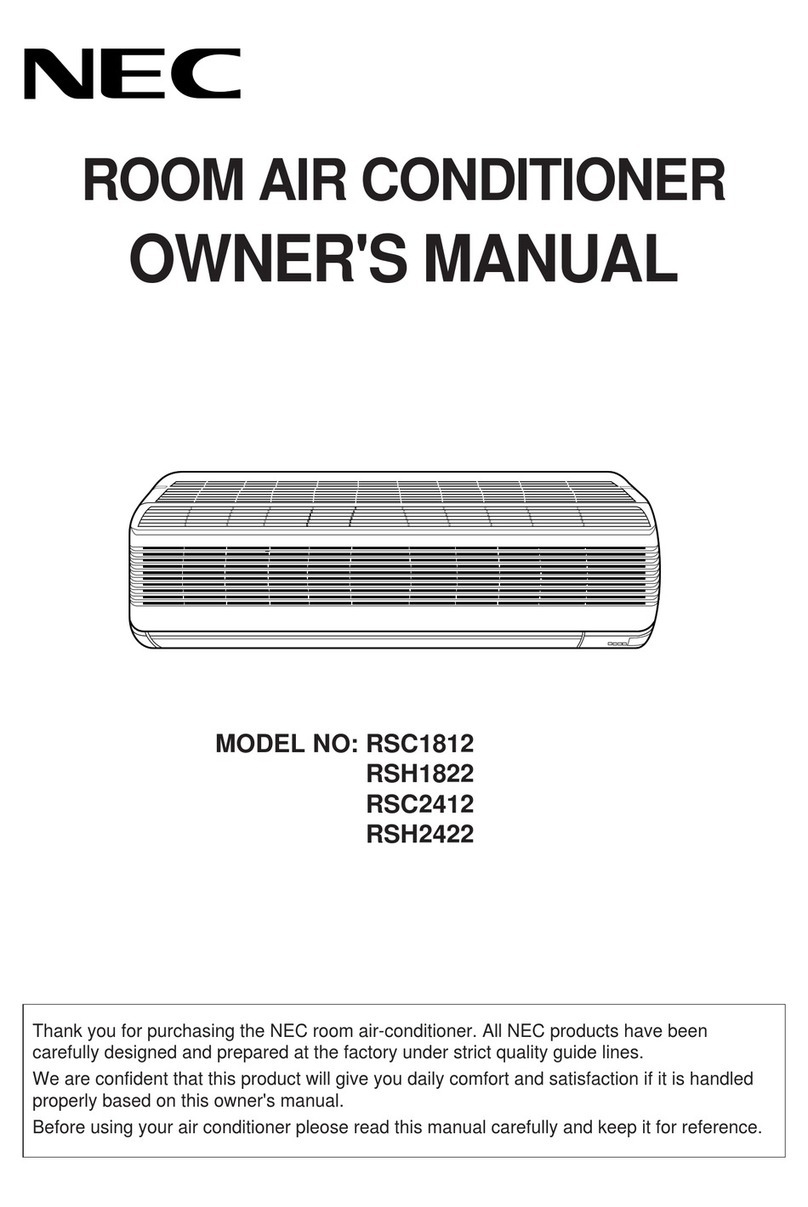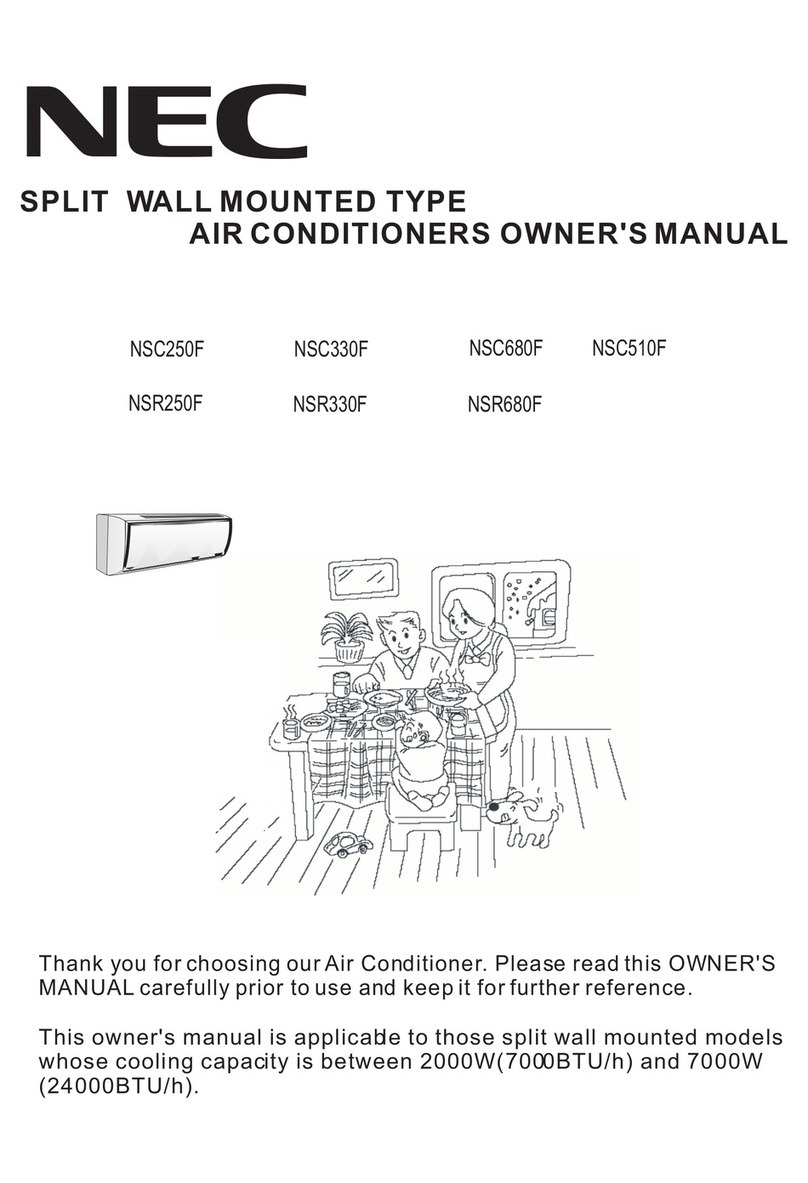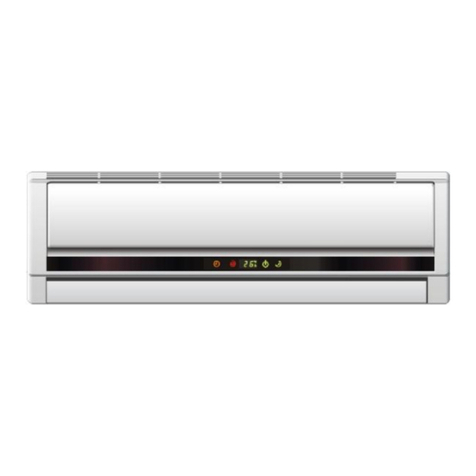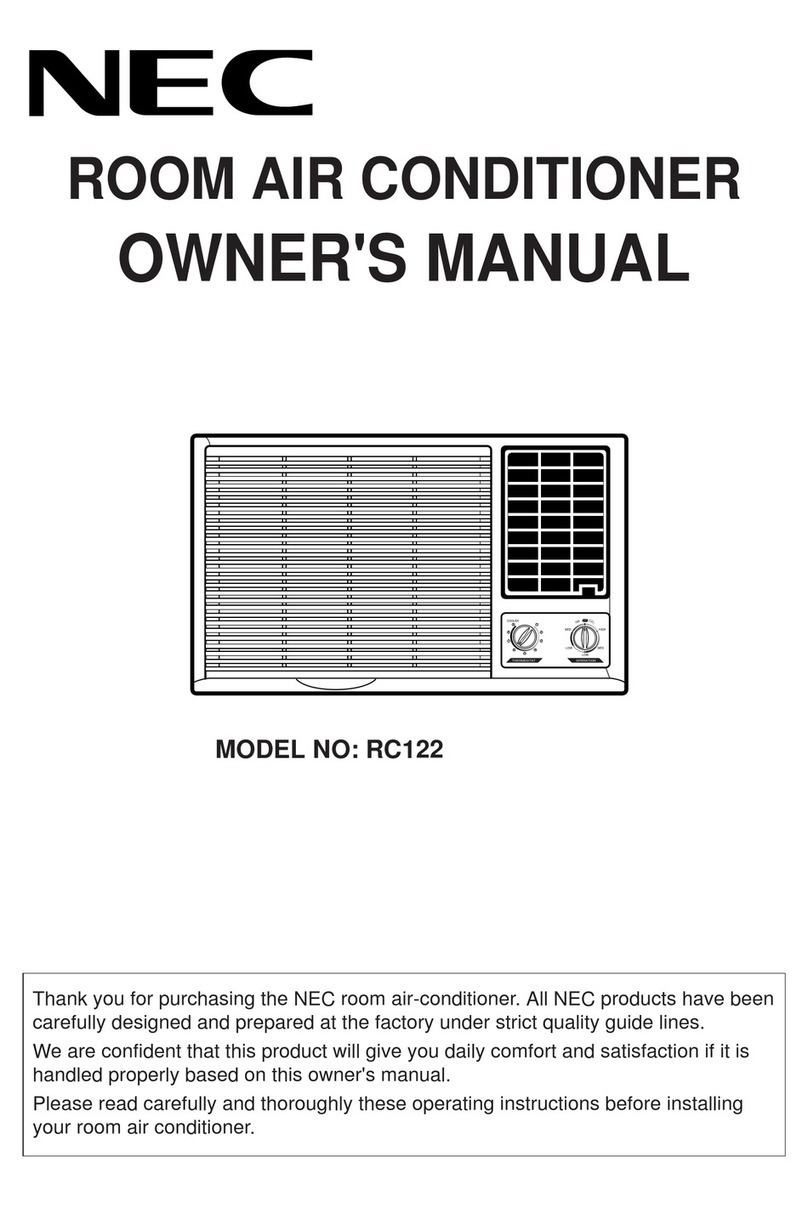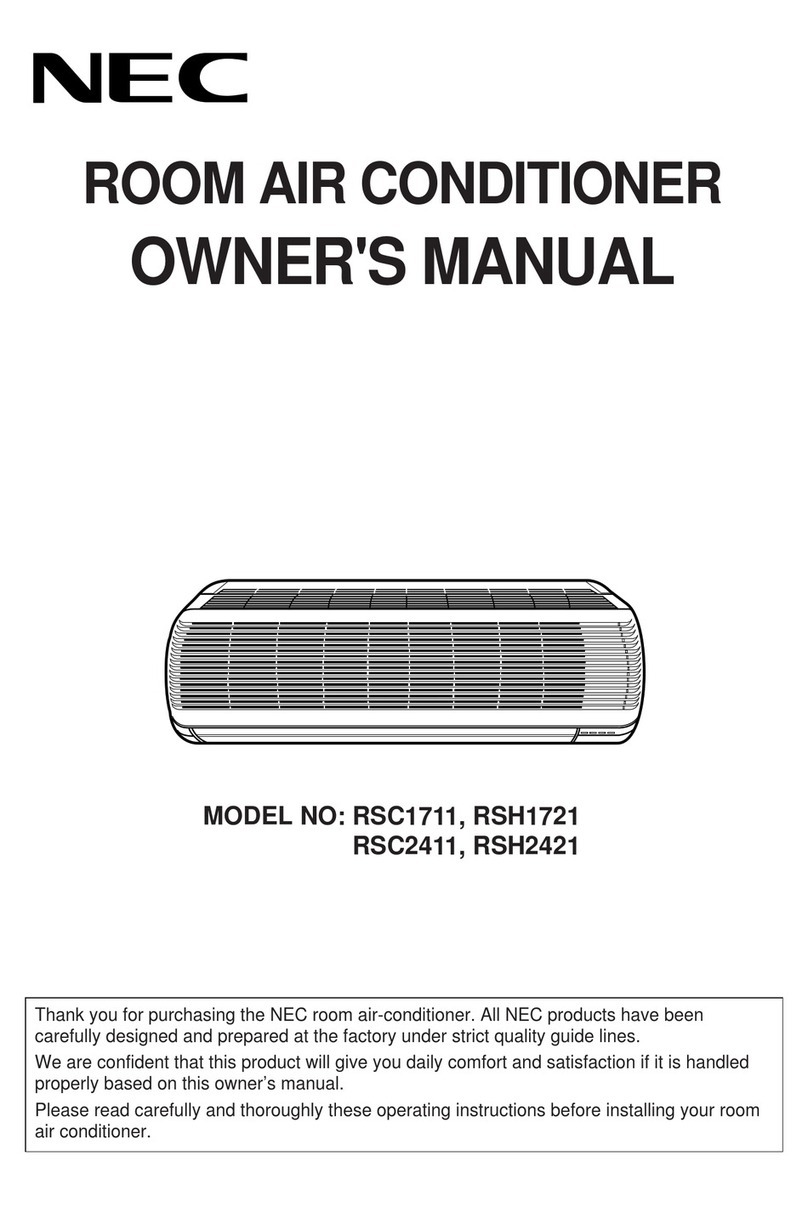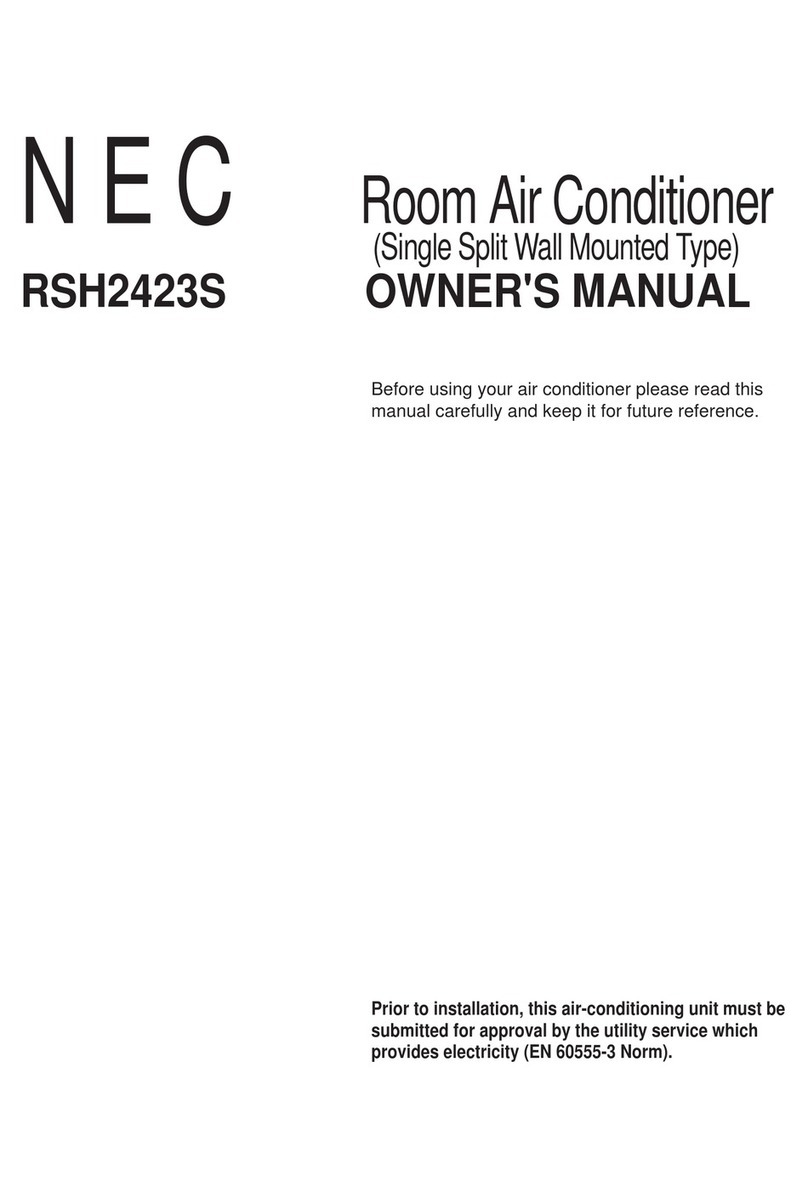Installation
1. To avoid vibration and noise, make sure the unit is installed securely and firmly.
2. Install the unit where the sunlight does not shine directly on the unit.
If the unit receives direct sunlight, build an awning to shade the cabinet.
3. There should be no obstacle, like a fence, within 50cm which might restrict heat radiation from
the condenser.
4. Install the unit a little obliquely outward not to leak the condensed water into the room (about
10mm).
5. Install the unit with its bottom portion 75-150cm above the floor level.
6. The power cord must be connected to an independent circuit. The green wire must be
grounded.
Note
ABOUT 10mm
Over 50cm
HEAT
RADIATION
FENCE
GASKET AWNING
COOLED AIR
75~150cm
10
Safety Precautions
Operating Instructions
Installation Instructions
Troubleshooting Tips
All side louvers of the cabinet must
remain exposed to the outside of the
structure.
CAUTION
COOLING MODE
INDOOR OUTDOOR
MAX. MIN. MAX. MIN.
32°C
21
°C
43
°C
21
°C
HEATING MODE
INDOOR OUTDOOR
MAX. MIN. MAX. MIN.
27°C
20
°C
24
°C
1
°C
■
Do not install, remove and reinstall the unit by yourself.
•Improper installation will cause water leakage, electrical shock, or fire. Please consult authorized
dealer or specialist for the installation work. Please note fault caused by improper installation is
not covered by warranty.
•Unit must be installed in an easily accessible area. Any additional cost required to hire a special
equipment to service the unit will be the responsibility of the customer.
■
The reverse cycle system of the air
conditioner is based on the air cooling type
heat pump which absorbs heated air from the
outdoor and discharges it indoor.
Therefore if the outdoor is exposed to very
low temperature, specifically below 0°C, the
heating capacity drops off rapidly. In this
case, we recommend customers don’t
operate the air conditioner.
OPERATING TEMPERATURE













